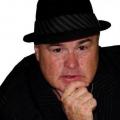Yes Peggy, you did get another conversation going. Good job!
The entire music industry is one big "gray area." There are some rules and then most people skirt around the rules. For many years, musicians did "off the clock" sessions, which meant they could do demos and not have to be paid full scale. As "Master Sessions" began to decrease in the 80's, smaller sessions and smaller studios came into being.
You see, in the "old days" (from the 50's, on up into the 70's) Nashville only had so many studios and so many songwriters. They actually COULD walk from door to door to play songs for publishers. They rarely did "demos" as the songs went from live guitar or piano listenings up to the big sessions. And sessions were VERY EXPENSIVE. Because you would HAVE to have 6-8 STUDIO MUSICIANS, an arranger, a session leader, and everyone playing at one time. There wasn't multi track recordings, so if one person messed up, they had to all do it over again.
You see, in the "old days" (from the 50's, on up into the 70's) Nashville only had so many studios and so many songwriters. They actually COULD walk from door to door to play songs for publishers. They rarely did "demos" as the songs went from live guitar or piano listenings up to the big sessions. And sessions were VERY EXPENSIVE. Because you would HAVE to have 6-8 STUDIO MUSICIANS, an arranger, a session leader, and everyone playing at one time. There wasn't multi track recordings, so if one person messed up, they had to all do it over again.
The major studios would have "smaller studios" (usually termed studio "B" or "C" and they would be geared around demo or smaller projects. To give you a perspective, on the Beatles "White Album", Magical Mystery Tour" and Let It Be" were recorded in all three studios at the same time. At ABBY ROAD and EMI studios. They would do major tracks in one big room, or "Studio "A", George might be in Studio "B", John at Studio "C" and Paul over at EMI. They were multi tracking and all working on their own projects and others. At the same time, they were producing acts like Cilla Black and James Taylor, for their APPLE RECORDS division.
In Motown, it was the SNAKE PIT, as the main studio, with smaller "B" rooms going at the same time. In LA, Gold Star and Capitol all had studios. In New York the same thing. At the "Brill Building" in the 50's and 60's, you would have all the songwriters, Carol King and Geofry Goffin, Neil Sedaka, Neil Diamond, Lieber and Stoller, etc. would all write all week then get to a main room on Friday and play the songs they had written. The ones that got the most votes got the demos, which were pretty close to the final project.
Then as those producers and engineers, branched off, started their own studios, musicians did the same thing. Larry and Kenny Beard were two of these studios. They came to Nashville and worked int he studio system, being engineers, producers, and musicians until they moved on to their own studios.
In the 80's smaller and home studios exploded at one time having around 1000 studios around the town and the outskirts. Over time most of those are gone, and home recording has taken over. But there are still the big dogs, and people like Beard, Jay Verne, and others do a lot of DEMOS while the big dogs like THE CASTLE, THE PARLOR, and others take on the huge projects.
So with a huge supply, people often look the other way on rules. Again, with almost everything now, even some of the movie and television productions, there are not a lot of payouts. I recently saw a friend of mine who scored a cut in a Leo DeCaprio movie, and got around $4.00 for it. There are a lot of in's and outs now and there is not a "one size fits all" approach to music. Some of the smaller cable channels, Hallmark for example, or some of the reality shows, don't pay ANYTHING for music. They make our old favorite saying "YOU WILL GET EXPOSURE." You can DIE from exposure. But there are a lot of twists and turns to this and getting paid has always been something that has been difficult to do. Why they call us "Starving Artists."
MAB
Like
